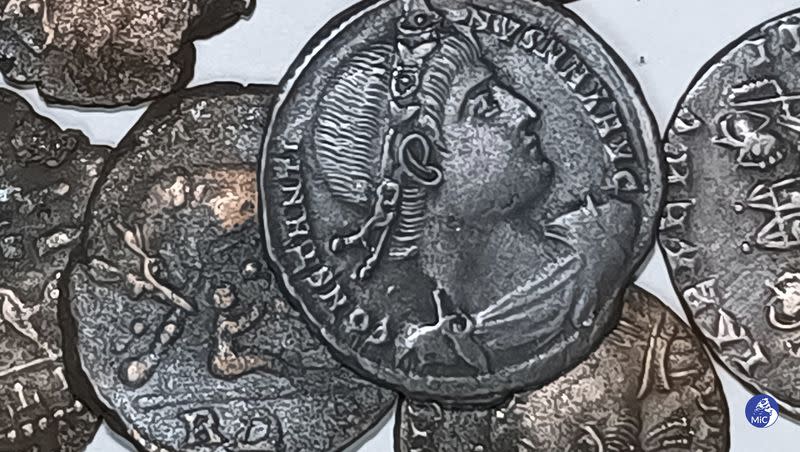Tens of thousands ancient Roman coins were discovered. Why does it matter?

When a diver went underwater off the coast of Sardinia, he spotted something shiny and metallic in the water. A lot of somethings. The glimmering on the sea floor turned out to be tens of thousands of ancient Roman coins.
It’s estimated there are anywhere between 30,000 and 50,000 coins sitting on the sea floor, a press release from Italy’s Ministry of Culture indicated. “All the coins taken are in an exceptional and rare state of conservation.”
After the diver spotted the coins, officials conducted a dive to investigate the area and retrieve the coins. In the process, they noticed that the seabed could be home to a shipwreck because of where the seabed is and its form, according to the ministry.
The coins have been dated to the fourth century, the ministry said. “The group of follis (coins) recovered comes from almost all the mints of the empire active in that period with the exception of Antioch, Alexandria and Carthage.”
Sardinian archaeology department official Luigi La Rocca said in a statement, according to The Associated Press, that finding the coins is “further evidence of the richness and importance of the archaeological heritage that the seabed of our seas, crossed by men and goods from the most ancient of epochs, still keep and preserve.”
More research is needed to determine if the seabed is home to a shipwreck.
Why do coins matter for archaeology?
Numismatics — or the study of coins — provides a window into the ancient past in a unique way.
When it comes to ancient Romans, a lot is lost to history. “Because there are such limitations on primary sources, it is important to use coins as evidence to gain insight about Roman economics, history, value and beliefs, and materials,” Fiona Marks wrote for Rhodes College
A lot of artifacts, like kitchen tools or vases, can be tricky to date. The range given for these artifacts can be rather broad, but coins are different. Since coins are often associated with a specific political regime, they come with their own date, Smithsonian Magazine reported.
When coins are found at a particular soil level or along with other objects, they can be valuable to help date the objects around them. It doesn’t mean that those objects are necessarily the same date, but it can provide some context.
Beyond dating, coins provide other glimpses into civilizations.
The type of material that a coin is made from can tell you something about its value, according to the American Numismatic Society. “The metals selected had to be abundant enough to provide the raw material for an exchange medium, but scarce enough to have value in their own right.”
Not only do the metals matter, but so does the style. While the style can give a glimpse at artistic style, the details in the image, however well they are done, can provide clues.
“Rather than label a figure’s hair as well or poorly rendered, one should describe precisely how it is rendered: as straight or wavy lines, ringlets or locks, small or large tufts. How are the eyes drawn? The mouth formed? How is the neck or bust truncated?” per the American Numismatic Society. “When we speak of the style of a coin, it is not enough to look at the images only. Do the coins have borders?”
Coins have two sides, and oftentimes, each side will have a different style. That’s true of ancient Roman coins.
“Looking at inscriptions, coins that display a portrait are typically ... a visual of the emperor so that he gets widespread recognition, while not specifically realistic,” Marks wrote for Rhodes College. “The portraits do not only show the present emperor but they also show his authority. The inclusion of crowns which you will see in some of the coins on this page, was used as a way to show recognition from battle.”

